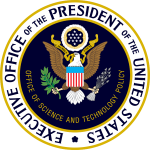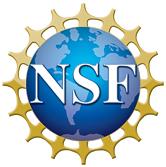
 What would you do with a 1 Gbps, layer 2 programmable, sliceable network?
What would you do with a 1 Gbps, layer 2 programmable, sliceable network?
That’s the central question underlying the US Ignite Gigabit Applications Workshop, a daylong meeting co-hosted by the NSF’s CISE Directorate and the White House Office of Science and Technology Policy (OSTP) early last week. The workshop — supported by several other Federal agencies as well as a number of public and private partners — brought together over 80 individuals from colleges/universities, for-profit companies, non-profit organizations, and Federal, state, and local governments from across the country.
About US Ignite
Recent investments in broadband (>100 Mbps up and down) in highly innovative cities and regions across the country are creating exciting opportunities for researchers and entrepreneurs to develop novel gigabit applications and services that may be deployed to consumers. In particular, six cities/regions — namely Chattanooga, TN; Lafayette, LA; Cleveland, OH; Washington, DC; Philadelphia, PA; and regions of Utah — have agreed in principle to be interconnected with one another via the GENI testbed, all the while being open to researcher/entrepreneurial experimentation. It is hoped the resultant high-bandwidth, virtualized network access — i.e., ultra-high-speed 1Gbps, layer 2 deeply programmable and sliceable — will spark the development of killer apps in areas of national priority [health, education, energy, economic development (including advanced manufacturing), transportation, and public safety] that will yield interesting results and demonstrate what might be possible were broadband more widely accessible in throughout the country.
To facilitate this effort, US Ignite will fund researchers, developers, and entrepreneurs to develop applications and services, and to deploy them to “real” end users on the resultant at-scale testbed.
For more details about the inception of US Ignite, click here.
Workshop goals
A key challenge for US Ignite is to identify teams — i.e., to align researchers (who have applications and services) with cities (who would like to see certain applications/services made available to their populations) — and understand the resources that they will need in order to build and launch applications and services. With so many US Ignite partners — academic and industrial researchers; Federal, state, and local officials; funders; etc. — in the same room at last week’s workshop, the goal for the day was to begin to do just that.
Infrastructure, cities, and applications
The workshop began with a series of presentations from officials representing the six cities/regions that are part of US Ignite. The officials described the network resources available to developers and users, as well as the application areas in which they are most interested. Among them:
- Cleveland, OH: Lev Gonick, Chief Information Officer of Case Western Reserve University, described how his team is using fiber to reach into the community around the university through the Case Connection Zone as well as a regional aggregation strategy called One Community, a 501(c)(3) “mayor-proof” community-owned network. The priorities of this community are public safety, smart health & wellness, education, and energy. “In each of these, one might say that we are up against not just a nice idea, but really a … state of crisis,” Gonick said.
- Chattanooga, TN: Jim Ingraham, Vice President of Strategic Research at the Chattanooga-based Electric Power Board (EPB), described his municipal electric system — spanning 320,000 residents and 170,000 metered customers over 600 square miles – and the smart grid and communications infrastructure currently being deployed throughout it. “All 170,000 customers today have access to up to a gigabit of symmetrical Internet service,” Ingraham said. “When we have our metering all deployed in early 2012, with 15‑minute interval meter data, we’ll go to 5.9 billion data points per year. That data to us is pure gold.” Besides the electric power system, areas of interest to Chattanooga include health and telemedicine, manufacturing, and general business and entrepreneurship.
- Lafayette, LA: Geoff Daily, Director of Lafayette-based FiberCorps, described how he’s “spent the last few years of my life [trying] to figure out the answer of what do we do with all the bandwidth now that we have the infrastructure.” He outlined six community-inspired projects, i.e., 3D render farm, health information exchange, business telemedicine, netcast, virtual horse farm, and “Virtual Lafayette.” Among Lafayette’s interests: education, health and telemedicine, economic development (a “video-based digital economy”), and public safety.
- Washington, DC: Tegene Baharu is Chief Technology Officer of DC Net, which was established after Sept. 11, 2011, to provide secure, managed data, voice, video, and wireless services for government and education institutions in the nation’s capital. Today, a 360-mile fiber optic network connects over 350 DC government locations, including 127 public schools interconnected at 1G speeds. DC’s interests include public safety, government/public services, health, and education (to include ultra-high-speed videoconferencing and multimedia-based applications).
- Salt Lake City, UT, region: Todd Marriott, Chief Executive Officer of UTOPIA described his region’s broadband network as “the greatest sandbox in the world.” He noted that his region’s application interests span multi-purpose video, health and telemedicine (home sensors), and economic development and innovation (e.g., the executive producers of Pirates of the Caribbean recently worked from the region because “they could work more efficiently from [there] than in Hollywood”).
- Philadelphia, PA: Allen Frank, the former Chief Technology Officer of Philadelphia, summarized the development of “Digital Philadelphia.” The nation’s fifth largest city has broad-ranging interests, including municipal wireless, video surveillance, public safety, citizen engagement, and education. Front and center is job creation. “Our vision was to make Philly [an] urban transformation,” Allen said. “We obviously want to be the next Silicon Valley.”
Beyond ultra-high-speed, US Ignite is also about layer 2 programmability — opening up non-IP-based internet architectures — and sliceability – isolating and allocating network resources to a given slice of applications or services. To this end, Chip Elliot, Director of the GENI Project Office, described how GENI is a virtual laboratory capable of enabling people to engage and explore future Internets at scale — spanning commercial terms, future applications and services, etc.
I think this is important because many of us believe the Internet has been a roaring success because you can buy and install any software you want in your computer that you want and connect it to the Internet. Anyone can write the software; you can pick the software that you want to run. At the end, the Internet is totally open. GENI takes this one step further. It opens up deep into the Internet so you can buy and install the software you want all the way through the network — not just at the edge, but in the clouds, in the middle boxes inside the network, and so forth. This has the potential of opening up a whole new round of innovation in this space.
Finally, to help pair city infrastructure resources/interests with developers, a number of researchers showcased their recent applications/services, spanning smart health and wellness, home energy management, smart transportation, public safety, STEM education, and advanced manufacturing. Some examples:
- Marjorie Skubic from the University of Missouri discussed proactive health management in smart facilities;
- George Adams from Purdue University outlined advanced manufacturing tools to run modeling and simulation on virtual persistent machines in the cloud — and presented a completely instrumented wind farm being built with GE;
- Hongwei Zhang from Wayne State University described smart grid and hybrid energy systems as well as smart transportation and infotainment in automobiles; and
- Jon Taplan of the University of Southern California’s Annenberg Innovation Lab laid out a variety of video and music apps in the 1.5-8 Gbps range.
Next steps
Some potential partners were identified by the end of last week’s workshop and the resultant teams are being charged with developing a draft plan for how they will work together. At a second workshop to be held in Cleveland on June 9-10, some of the teams will deliver short presentations describing their joint research ideas. Following the second workshop, a solicitation will be released and teams (not restricted to attendees) will be invited to submit EAGER proposals to NSF. The most innovative, feasible and impactful projects will receive awards to try out their ideas over the next several years.
As Aneesh Chopra, the nation’s first Chief Technology Officer (CTO) and the Associate Director for Technology at OSTP, called upon the “Ignite family” during the day’s final session:
At the end of the day, the goal here is to take the conversations from [today] and translate them into specific and tangible outcomes and then, as a group, to make sure that we’re all held accountable so that we can achieve what we hope will be the next platform for these kinds of innovations — because we need them if we’re going to solve the big problems the President has outlined for us in health, education, and manufacturing, and the like.
To learn more about the workshop, check out the live blog from the event as well as videos of the plenary sessions.
(Contributed by Will Barkis, NSF/AAAS Science & Technology Policy Fellow; and Erwin Gianchandani, CCC Director)










Trackbacks /
Pingbacks